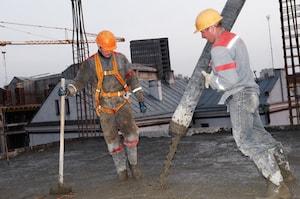Safety Codes

In 1911, Washington State was one of the first states to adopt a workers’ compensation system. In 1923, Washington State implemented its first set of job site safety and health regulations. In 1971, the U.S. Congress created the federal Occupational Safety and Health Administration [OSHA] and tasked it with developing and enforcing workplace safety and health rules throughout the country. Washington was one of 26 states that opted out of the federal system and kept its own job site safety and health rules in force, with the understanding that the Washington State rules would be at least as strict as the federal rules. In 1973, the Washington State Legislature revamped Washington’s workplace safety and health system, passing the Washington Industrial Safety and Health Act [WISHA], which empowered the Department of Labor and Industries [DLI] to create and enforce workplace safety rules in the state. RCW 49.17. The DLI section that is in charge of overseeing workplace safety matters is called the Division of Occupational Safety and Health [DOSH].
Most – but not all — state safety and health regulations are set forth in Title 296, chapters 32 through 901, of the Washington Administration Code. The Safety Standards for Construction Work that specifically apply only to construction sites (although many other more general regulations also apply to construction sites) are located at WAC 295.155.
Federal OSHA regulations only apply to the following types workers at the following types of job sites in Washington State:
- workplaces with federal employees;
- nonfederal employees working on federal reservations and military bases;
- employees working on floating dry docks, fishing boats, construction barges, etc.;
- employees working for tribal employers on tribal lands; and
- longshoremen and shipyard workers.
Every other employer in the state (e.g., construction contractors) is subject to WISHA jurisdiction.
Among the many things addressed in the Safety Standards for Construction Work are environmental controls, hazard communication, personal protective gear, life saving equipment, fall protection, fire prevention, signaling, flagging, storage, disposal, rigging requirements, hand and power tools, welding and cutting, electrical work, stairways, cranes, derricks, hoists, elevators, conveyors, motor vehicles, mechanized equipment, excavation, trenching, shoring, concrete and masonry construction, steel erection, underground construction, demolition, rollover prevention, and overhead protection. These safety regulations set the “minimum standards” that contractors must follow in order to provide construction workers with a safe place to work. When a worker is injured because of a violation of one or more of these safety regulations, the violation is strong evidence of negligence.
It does not matter whether the workers is injured in Seattle, Tacoma, Olympia, Bellingham, Marysville, Everett, Centralia, Longview, Vancouver, Ellensburg, Wenatchee, Yakima, Richland, Walla Walla, Spokane or at any point in between — WISHA applies to the job site.
The lawyers at Kraft Davies Olsson PLLC have successfully represented hundreds of construction workers who were injured due to WISHA violations. If you or a loved one has suffered such an injury, please call us at 206.624.8844 for a free consultation.







